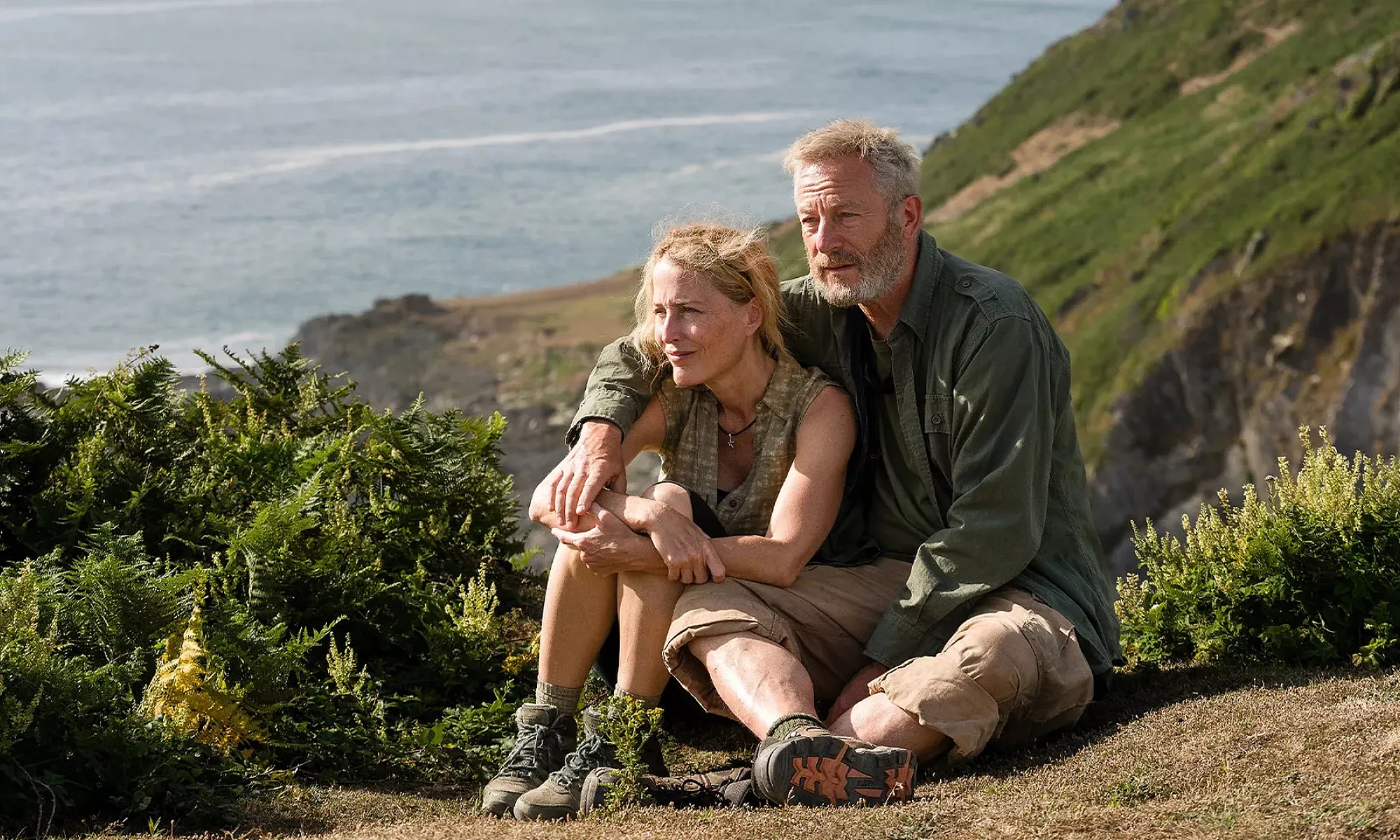The Salt Path (2024–Adaptation of 2018 Memoir) – A Heartfelt Journey Through Despair and Renewal
The Salt Path is a deeply affecting British biographical drama released in 2024, adapted from Raynor Winn’s acclaimed 2018 memoir. Directed by theatre veteran Marianne Elliott and scripted by Rebecca Lenkiewicz, the film stars Gillian Anderson and Jason Isaacs as Raynor (“Ray”) and Maurice (“Moth”) Winn—an ordinary couple plunged into extraordinary hardship. After a failed business guarantee leads to the loss of their farm and the sudden diagnosis of Moth with corticobasal degeneration, a rare degenerative disease, they become homeless and impulsively embark on a 630-mile trek along England’s iconic South West Coast Path .
The film opens with the raw reality of eviction: bailiffs battering down their door, Ray whispering frantic instructions, and Moth’s stoicism breaking under emotional strain. Moments later, the guidebook Ray spots becomes a beacon of hope. With minimal gear—second-hand rucksacks, a tent from eBay, and cheap sleeping bags—they set out from Minehead to Poole Harbor, traversing Somerset, Devon, Cornwall, and Dorset

Visually, the film is stunning. Hélène Louvart's cinematography captures both the majestic beauty and uncompromising harshness of the coastline—foggy cliffs, storm-lashed seas, and sun-dappled fields—painting the land itself as a silent, breathing character that reflects the couple’s emotional trajectory
Gillian Anderson’s portrayal of Ray is a revelation. She embodies quiet resilience. Her worn face speaks volumes—hope, heartbreak, determination—especially in silent sequences where she simply absorbs the world around her. Jason Isaacs complements perfectly as Moth, capturing a man weakened by disease yet strengthened by perseverance and love. Their chemistry is intimate and lived-in, exploring themes of loyalty, humility, and survival .

The screenplay balances the narrative with short flashbacks to their former life—family, security, loss—juxtaposed against the grueling physical journey. Scenes of poverty, like searching for a cash machine or subsisting on noodles, are interwoven with moments of human kindness: passing strangers offering food, shelter, or companionship, reminding viewers of the tenderness that persists amid hardship .
Critics have largely praised the film. It holds an 86 % rating on Rotten Tomatoes, applauded for its scenic realism and emotional nuance—particularly Anderson's performance
Reviews highlight Marianne Elliott’s assured feature debut that complements the unflashy yet effective storytelling and nuanced visuals . Nevertheless, some critics note the film’s pacing is meditative and at times meandering—its quieter moments may not fully satisfy those craving a more structured narrative .

Importantly, the film has ignited renewed interest in the South West Coast Path. Tourism boards and walk associations report a surge in enthusiasts inspired by Raynor and Moth’s journey, though officials warn about the path's upkeep costs and environmental vulnerabilities
In its final scenes, after enduring winter weather and physical decline, the Winns complete their journey. They find a modest home and Ray begins writing the memoir that will ultimately inspire many. The film closes on a bittersweet, hopeful note—a testament to love’s power to guide us through loss and the healing balm of nature

At around 115 minutes, The Salt Path is a quiet yet moving pilgrimage—one that invites reflection on what truly makes a home and how resilience and connection can blossom even on the edge of despair. For those drawn to introspective, character-driven dramas set against breathtaking landscapes, this film is a profoundly rewarding trek.

-1754376166-q80.webp)
